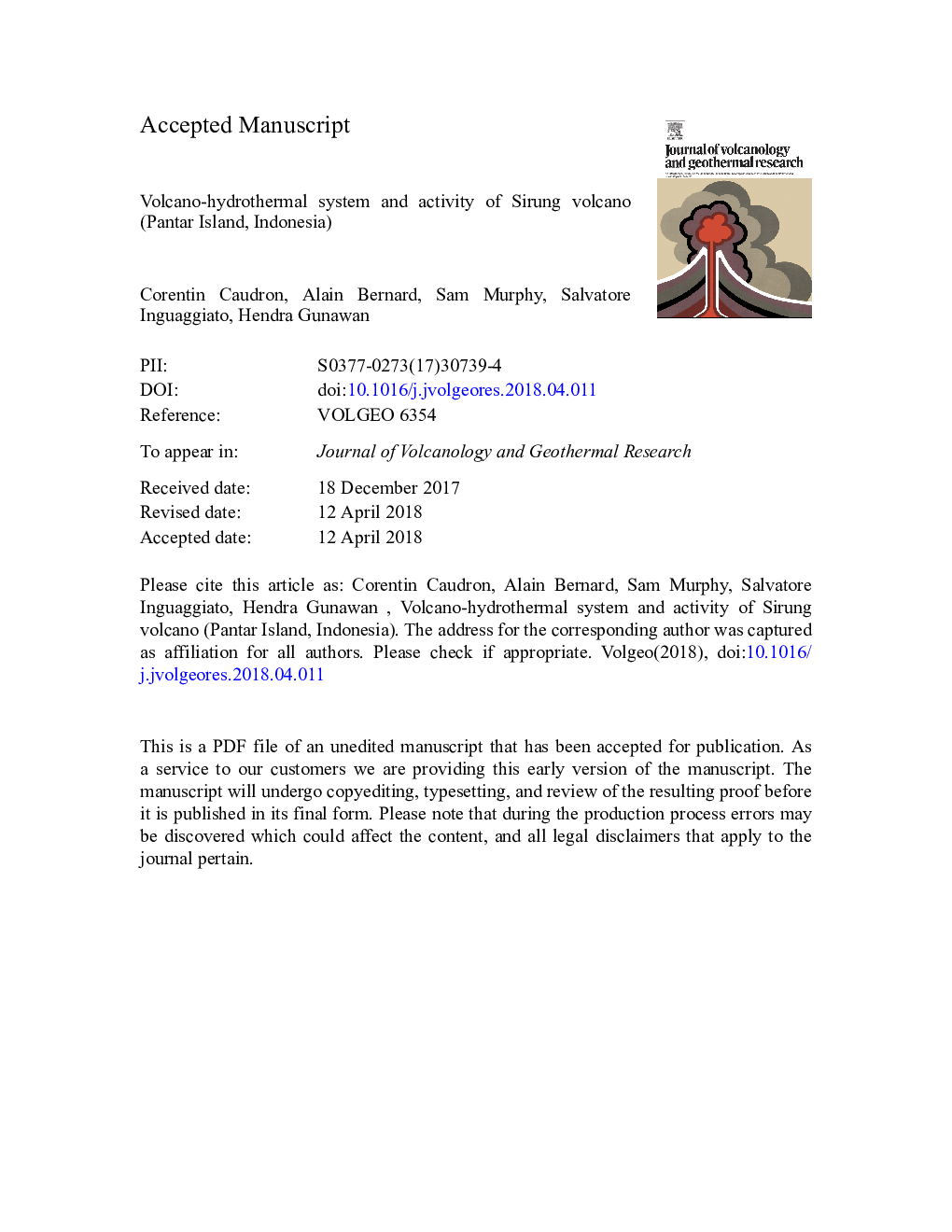| Article ID | Journal | Published Year | Pages | File Type |
|---|---|---|---|---|
| 8911284 | Journal of Volcanology and Geothermal Research | 2018 | 64 Pages |
Abstract
Sirung is a frequently active volcano located in the remote parts of Western Timor (Indonesia). Sirung has a crater with several hydrothermal features including a crater lake. We present a timeseries of satellite images of the lake and chemical and isotope data from the hyperacid hydrothermal system. The fluids sampled in the crater present the typical features of hyperacidic systems with high TDS, low pH and δ34SHSO4-δ34SS0 among the highest for such lakes. The cations concentrations are predominantly controlled by the precipitation of alunite, jarosite, silica phases, native sulfur and pyrite which dominate the shallow portions of the hydrothermal system. These minerals may control shallow sealing processes thought to trigger phreatic eruptions elsewhere. Sparse Mg/Cl and SO4/Cl ratios and lake parameters derived from satellite images suggest gradual increase in heat and gas flux, most likely SO2-rich, prior to the 2012 phreatic eruption. An acidic river was sampled 8â¯km far from the crater and is genetically linked with the fluids rising toward the active crater. This river would therefore be a relevant target for future remote monitoring purposes. Finally, several wells and springs largely exceeded the World Health Organization toxicity limits in total arsenic and fluoride.
Related Topics
Physical Sciences and Engineering
Earth and Planetary Sciences
Geochemistry and Petrology
Authors
Corentin Caudron, Alain Bernard, Sam Murphy, Salvatore Inguaggiato, Hendra Gunawan,
